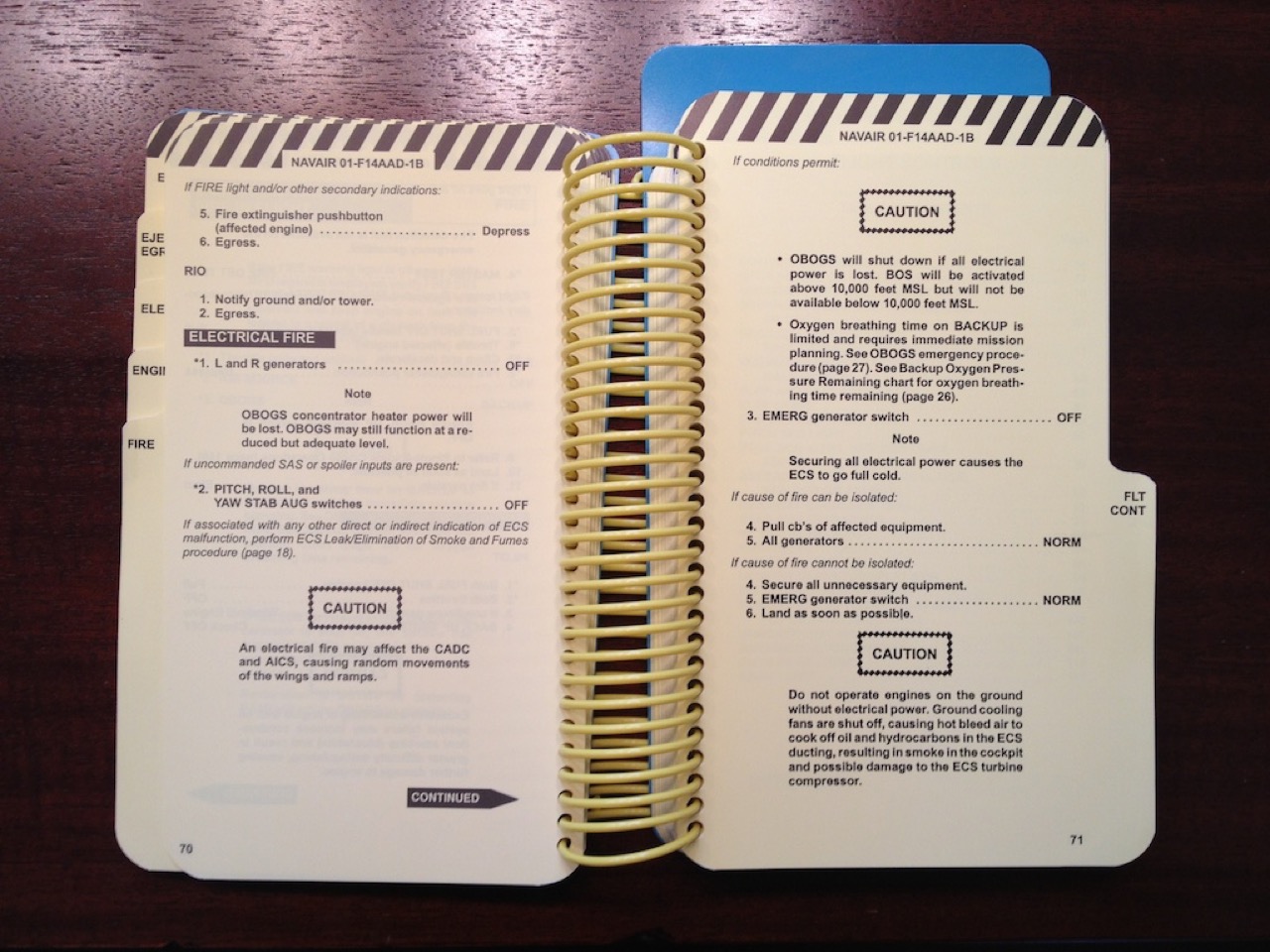This is not a post about typography.
Instead, it’s a post about helping. But first, some background.
The following image shows the procedure for an electrical fire in an F-14D Tomcat.

(Click the image to see it larger)
This procedure from the in-cockpit Pocket Checklist (PCL) shows how to tackle the electrical fire in five or six steps, depending on the specific indications and environment.
Interestingly, there are only two elements in this entire procedure that aircrew are required to memorize. Steps one and two are marked with an asterisk, making them "Immediate Action Items". We call these items "Boldface" due to the font weight they're given in the full 1000+ page aircraft NATOPS manual.
According to NATOPS:
Critical items (BOLDFACE PRINT) are those steps of an emergency procedure which must be performed immediately without reference to written checklists. All crewmembers are required to be able to demonstrate correct accomplishment of BOLDFACE procedures without reference to checklist.
Essentially, they’re the things that need to be done right now or you’ll fall out of the sky. Everything else can wait.
The Boldface for every emergency in an F-14 took only two pages of space, and could be written from memory in less than ten minutes. This was for an airplane with over a thousand circuit breakers in the cockpit alone.
So what about all that other stuff? Well, years of mishaps and close calls have taught us that we should under no circumstances attempt to memorize that extra information. Instead, after the Immediate Action Items are completed, we should take our time, open the PCL and read—slowly and methodically performing each procedure one at a time.
You see, there’s too much to learn in a Tomcat to keep it all straight in your head, and if you try you’ll most likely screw it all up. Heck, most of the procedures for emergencies or failures don’t even have Boldface. You look at the indications, open the book, breathe, read, fix. Simple.
So why is this important?
Yesterday I tried to answer a friend’s straightforward question about CSS positioning while I was at lunch, then Christmas shopping, then home playing with my son. I was doing this all (distractedly) via Twitter DMs.
And I screwed it all up.
So was it some hyper-critical problem that required a correct solution or people would die? No, although I did waste a few hours of my friend’s time and put a dent in my credibility.
I just really wanted to help …and be a good friend and a good dad and get the Christmas shopping done and…
While it may not have been a big deal that I remembered a few things wrong when discussing CSS with a friend, it still provides a great lesson in distraction and taking your time. Less than 5% of our emergency procedures in a Tomcat were memory items. How much of the CSS spec should be Boldface? How much of anything?
I can’t think of a single question on the ground where a quick answer now is better than a considered answer in a little while. All the ones in the air are already Boldface.
Yet every day the internet tempts us to knee-jerk and rage-quit and first-post the best answers, jokes or insightful comments of the moment, only to forget them a moment later.
If you’re rushing to answer and do it wrong, you’re not helping anyone and might be doing more harm than good. Take your time. Read. Research. Then do it right, the first time.
I learned this lesson in the cockpit a long time ago. It’s taken a little while longer to figure things out on the ground.